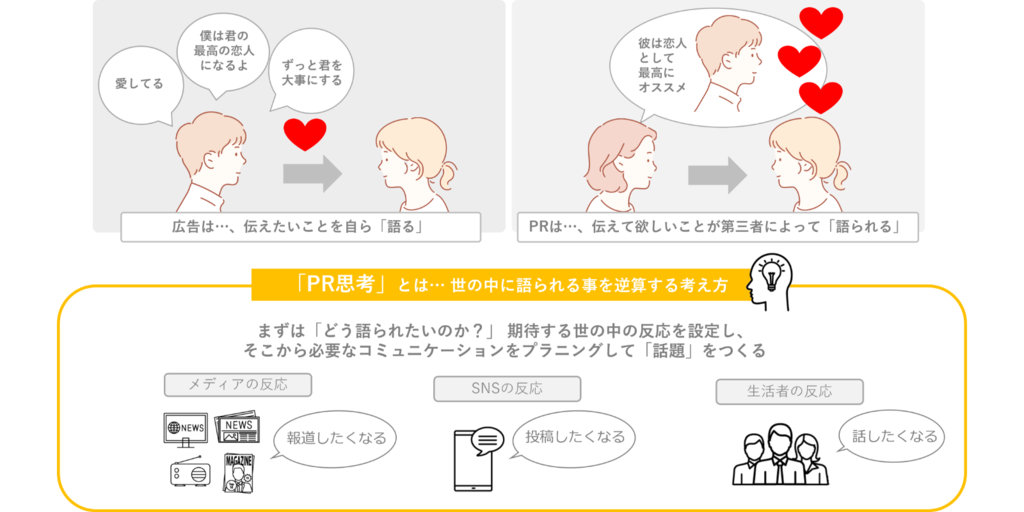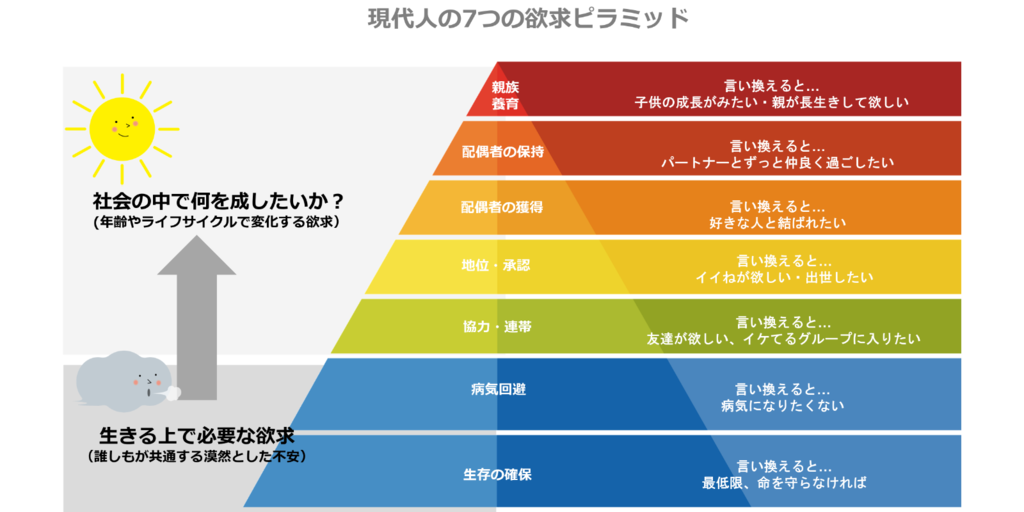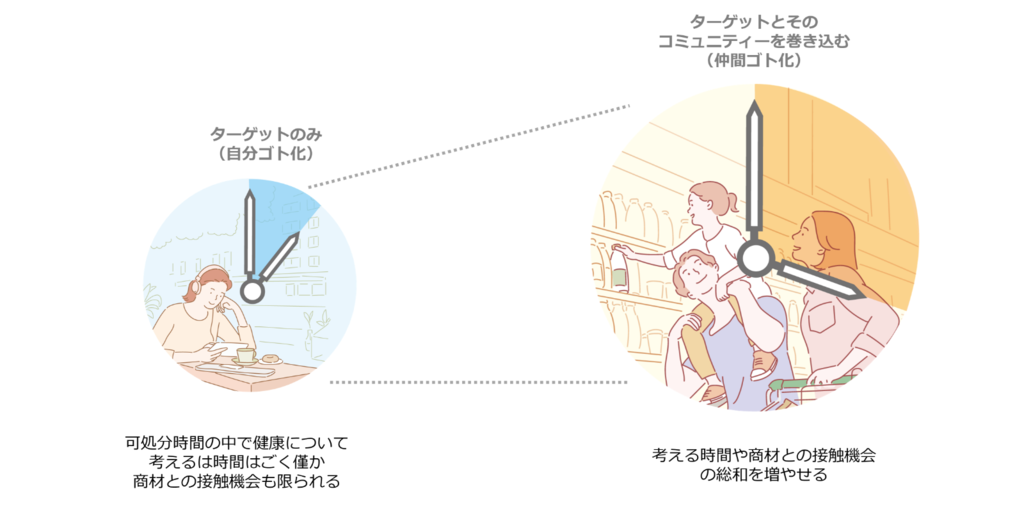Note: This website was automatically translated, so some terms or nuances may not be completely accurate.
From "making them talk" to "making them engage." What is the "PR mindset" essential for future healthcare marketing?
I'm ashamed to admit I have a lot of cavities. I love sweets, so I often crunch on snacks while working, but I hate going to the dentist. I'm the picture-perfect example of a hopeless adult. Holding my hand to the cheek where my tooth hurts, I mutter pathetically, "Man, oral health really is important..." Let me tell you about "Healthcare Marketing for the Future." Admittedly, a person who starts off flaunting their unhealthy habits might lack credibility. But I believe we need a "PR mindset" going forward – one that considers how to engage precisely these kinds of people in health matters.
The target audience for healthcare communication is people who "know they should, but can't stop."
I don't think we need to loudly proclaim "Health is important!" for most people to nod in agreement. But if you ask "Why do you strive for health?", you'll likely get a variety of answers. For example, some might start health activities because they want to achieve their ideal body shape to catch the eye of someone they like, while others might want to see their newborn child grow into adulthood. On the other hand, it's easy to imagine someone starting enthusiastically, only to find excuses like "I'm too busy with work this month..." or "It's raining today..." when they get lazy.
Health is ultimately just a state of being, so what you want to achieve within that state varies from person to person. That said, it can be hard to clearly feel what actually constitutes being healthy right now. That's why, even when you take action, facing temptation often leads you to do the exact opposite – it's practically a universal human experience. Sweets while dieting, late-night ramen after a drinking party, even cigarettes with proven cancer risks – you know you should stop, but you just can't.
The healthcare market offers a wide variety of products, but they all share the common goal of providing means or methods to achieve health. Consequently, what's most sought after boils down to their effectiveness and efficacy. However, results rarely appear after just one use; most benefits emerge only through consistent, long-term use. From a corporate perspective, as the market expands and becomes flooded with competing products across various categories, the necessity of cultivating loyal customers who will use their products long-term is increasingly being questioned.
Consequently, future healthcare marketing must go beyond simply promoting product effectiveness. It must consciously design strategies that encourage continued use. However, the target audience consists of people who know they should quit but can't. Understanding the mechanisms of health-related behavioral change is essential. Communication must be designed to facilitate sustainable, effortless continuation.
PR Thinking: Consciously Weighing the "Cost-Benefit Balance" in Your Mind
As mentioned above, healthcare marketing requires designs that focus not only on demonstrating product effectiveness but also on ensuring continuity. This necessitates "PR Thinking" – a strategy that works backwards from how things will be discussed in the world.
PR is often explained in contrast to advertising: advertising is when a company "speaks" its message directly, while PR is when a third party "speaks" it. PR thinking involves working backward from the desired public reaction, setting that expectation first, and then planning the necessary communications to achieve it.
Why is PR thinking effective for healthcare marketing?
Healthcare marketing faces unique challenges, primarily due to regulations like the Pharmaceutical Affairs Law. Because even the smallest aspect relates to human health, it mandates the use of medically accurate language to prevent misunderstandings or exaggerations, restricting expression strictly within defined boundaries. Since most consumers lack medical expertise, the more companies adhere to these rules to deliver accurate information, the more difficult it becomes to convey the message clearly to the "average person."
Therefore, a PR approach that consciously focuses on having third parties "tell the story" becomes effective, rather than companies simply "telling" the product information directly. While maintaining medical evidence, deliberately deliver the product's peripheral themes within contexts that resonate with consumers' interests. This sparks public discussion and highlights the product's necessity. For example, to promote yogurt effective for stomach health, one successful case deliberately introduced the peripheral topic of "the dangers of Helicobacter pylori" to successfully underscore the product's efficacy.

Three Ways to Break Free from "Can't Stop" Thinking Based on Mental Cost-Benefit Analysis
However, as mentioned earlier, future healthcare marketing must focus not only on effectiveness but also on sustainability. To achieve this, let's first examine the mindset behind the "I know I should, but I can't stop" state. As illustrated below, this mindset features a mental scale weighing "gains from improved health" against "the allure of temptations hindering health."

To prevent health-building activities from being interrupted, three approaches can be derived from this: ① "Weighing the benefits gained from becoming healthy more heavily," ② "Lightening the appeal of temptations that hinder health," and ③ "Shifting the fulcrum of the scale to reverse the tilt even when the temptation side is heavier."
What's needed is a PR story that makes it personal and communal
Now, let's explain how to apply these three approaches to crafting PR stories. However, regarding ②, since it impacts the product's potential (e.g., taste, convenience) and involves interesting techniques like gamification or behavioral economics nudges, yet correlates with the strategy layer, we'll incorporate it partially into the explanation of ③.
How to Craft PR Stories That Combine the "North Wind" and "Sun" to Stimulate Desire
For ①, "Emphasizing the Outcomes Achieved Through Health," the story must clearly prompt the target audience to envision "What do I want to achieve by becoming healthy?" While health goals vary by individual, recent psychological research categorizes modern desires into seven types, as shown below. Grouping these seven desires reveals two categories: the first two tiers from the bottom of the pyramid represent the vague anxieties (desires) everyone shares, centered on "protecting life." The third tier and above encompass specific desires like "what one wants to achieve within society." Crafting messages that stimulate these two types of desires in ascending order from the bottom makes storytelling easier.

First, the method to stimulate the vague anxiety of "protecting life," shared by everyone, is "appealing to fear." During the COVID-19 pandemic, many people indeed lived cautiously, avoiding crowds and strictly adhering to mask-wearing and handwashing/gargling. This can be seen as the result of the fear of viral infection becoming a societal concern. The aforementioned example of Helicobacter pylori and yogurt also falls into this category. However, while fear appeals are effective for mass-market societal concerns, research also shows their effects don't actually last very long.
Therefore, to help the target internalize the goal of becoming healthier as a personal matter, more personalized reasoning is necessary. This is where we add information that stimulates specific desires, such as "what they want to achieve within society," found in the third tier or higher. For example, at the top level of the pyramid—"Family Care"—we see the PR campaign for "smoking cessation clinics" conducted by a pharmaceutical company. While appealing to the target's own fear of smoking-related risks, it also communicated how smoking affects children by presenting the fact that "parental smoking impacts children's asthma." This led to an increase in clinic visit rates.
In this way, by crafting messages where universal anxieties serve as the "North Wind" and the individual target's desired outcomes act as the "Sun," it becomes easier to create PR stories that help targets personalize health-building activities as their own.
From "Making Them Talk" to "Engaging Them": Crafting PR Stories
Next, what can we do for method ③, "Shifting the fulcrum of the scales to reverse the tilt even when the temptation side is heavier"? Let me restate: the target audience for healthcare communication is people who "know they should quit, but can't." No matter how much you adjust the weight on either side of the scales, what can't be quit won't be quit. Since individual effort has its limits, an effective approach is to involve a third party to push the fulcrum of the scales. As seen in the previously introduced pyramid of needs, many human desires arise from relationships with others. It can be said that the greatest influence on behavioral change comes from third-party intervention.
In fact, similar approaches are used in national public health initiatives like metabolic syndrome screenings (specific health checkups). During the COVID-19 pandemic, strict infection control measures were initially enforced due to heightened awareness, but as the crisis prolonged, vigilance waned and precautions were neglected. Haven't you ever forgotten your mask when going out, panicked at the stares, and rushed to get one?
Traditional PR often focused on creating narratives that "made people talk" about themes connecting products to society. However, future healthcare communication must prioritize "engaging people." As illustrated below, it requires crafting stories that involve stakeholders around the target (family, friends, etc.) and their communities (workplaces, local governments, etc.), enabling them to influence the target's health.

For example, in a pharmaceutical company's PR campaign for prostate cancer prevention, they encouraged grandfathers to get checked by having their sons and grandsons write letters to them on Respect for the Aged Day. Another example involves a beverage company launching a pilot project with local government to deliver their products to elderly residents on remote islands, demonstrating how their offerings contributed to both physical and mental well-being.
One way to engage the surrounding community is by incorporating fun elements like games into initiatives. This approach could help achieve the second goal mentioned above: "reducing the appeal of temptations that hinder health."
Finally, another benefit of involving third parties: As mentioned earlier, the concept of health can be difficult to grasp tangibly. Given the constant demands of information processing throughout the day, targets typically have little disposable time to think about their own health. By involving third parties, we can not only forcibly increase opportunities for them to consider health, but also naturally raise health awareness among stakeholders in their environment (making it a group effort). This approach can also be expected to increase contact opportunities with the product itself.

So, as someone who knows they should but struggles to get healthy, I've summarized what I believe is necessary for future healthcare communication. Both the healthcare market and the nature of PR are evolving daily, so there are undoubtedly many other approaches and ideas out there. The healthcare clients we work with are also becoming increasingly diverse—from large corporations to startups, government bodies, universities, medical institutions, and NPOs. Moving forward, I want to keep exploring ways to make the world healthier through the power of communication, alongside even more people. We always have snacks ready for meetings, so please feel free to reach out.
The information published at this time is as follows.
Was this article helpful?
Newsletter registration is here
We select and publish important news every day
For inquiries about this article
Author

Kosuke Aoyama
PR Consulting Dentsu Inc.
Second Planning & Consulting Bureau
Senior Planner
After working at a film distribution company and a pharmaceutical company, he joined PR Consulting Dentsu Inc. He also participated in the Dentsu Group's cross-divisional healthcare project "dentsu health," where he handled a wide range of planning and direction primarily for clients in the healthcare sector.
